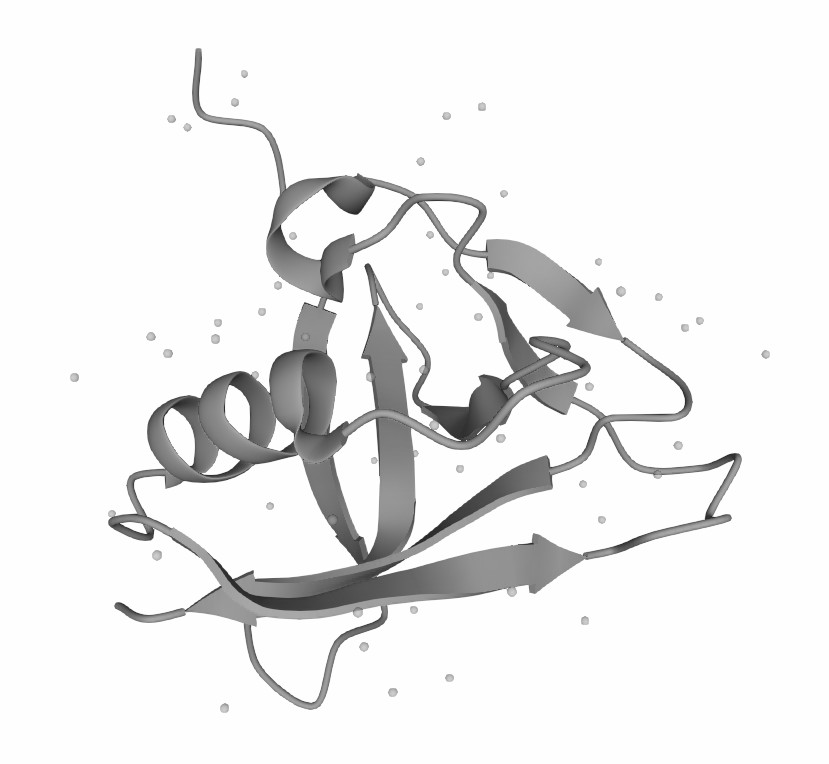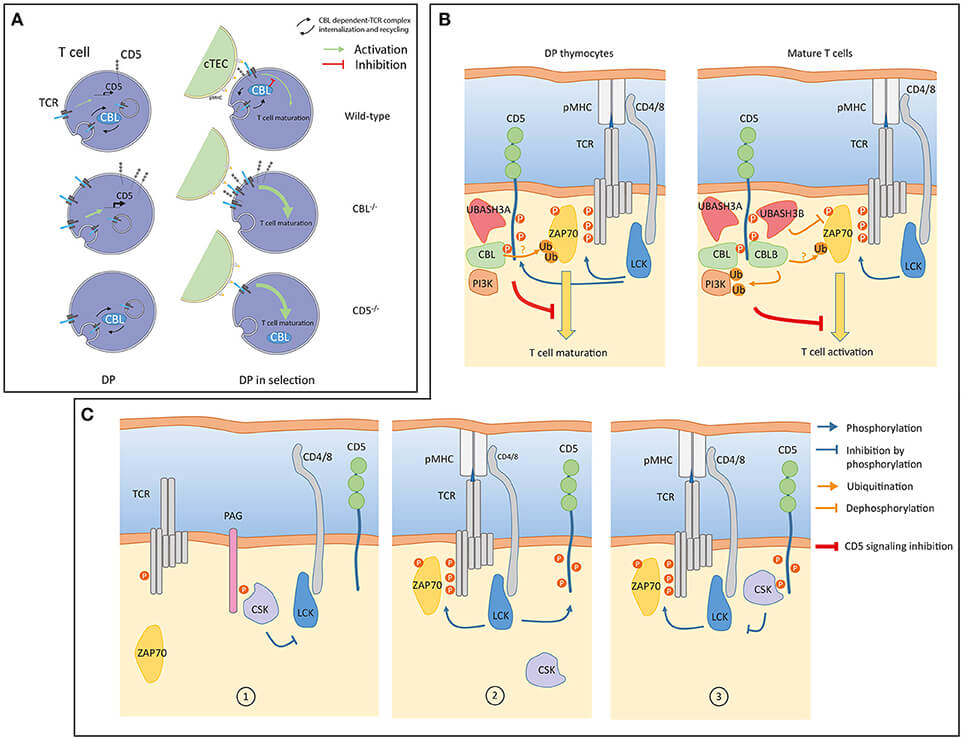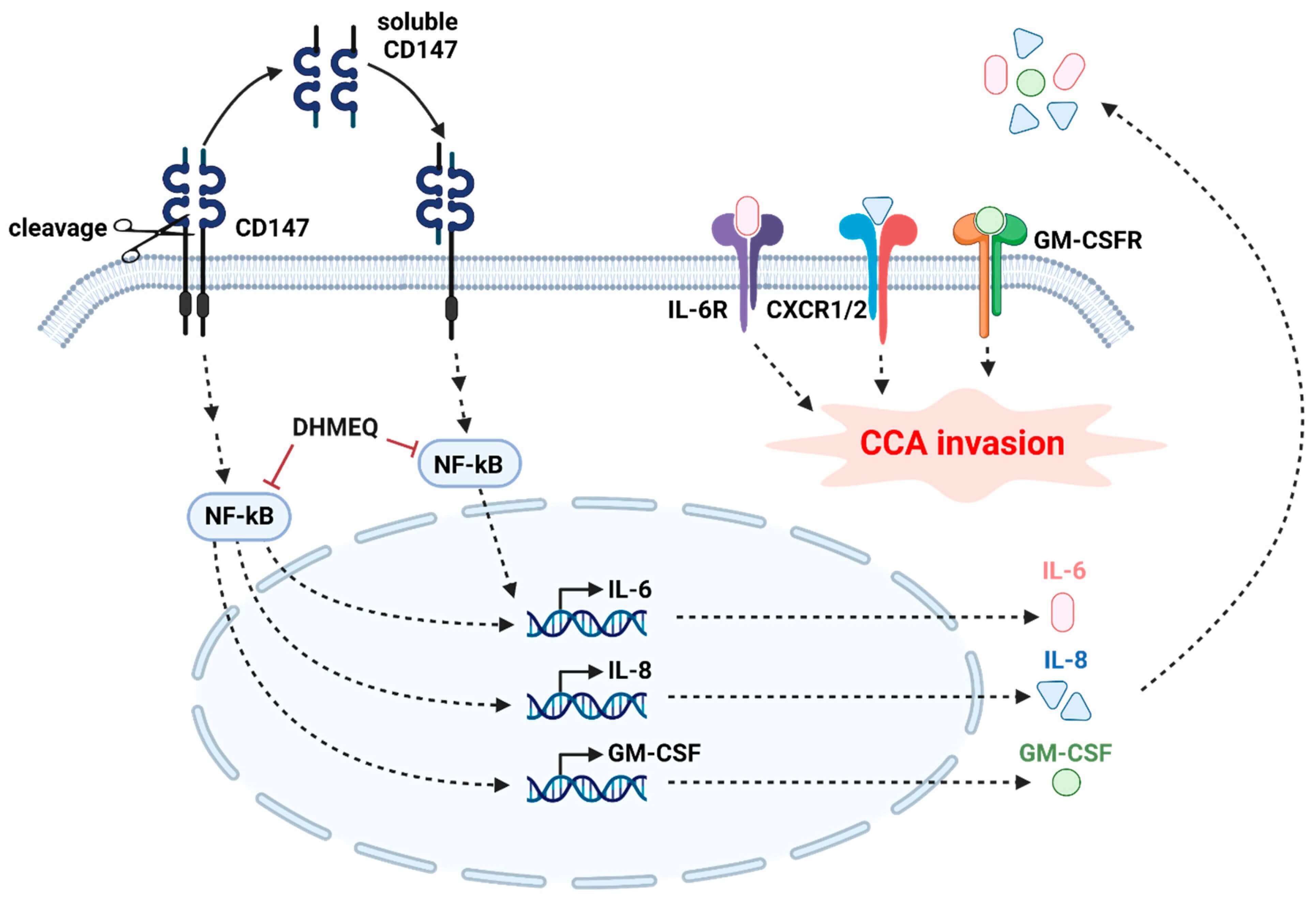Zolimomab Overview
Introduction of Zolimomab
Zolimomab is a monoclonal antibody that specifically binds to human and cynomolgus monkey CD5. Zolimomab aritox, a variant of Zolimomab that binds to the A chain of the protein ricin, is being investigated in the treatment of systemic lupus erythematosus (SLE) and graft-versus-host disease (GVHD).
Introduction of CD5
What is CD5?
CD5 is a type I transmembrane glycoprotein expressed on the surface of immune cells and members of the cysteine-rich superfamily of complement receptors. It is found mainly on T cells and B1a B cell types, and its activity is mediated by TCR signaling and TCR binding. CD5 was initially thought to be a co-stimulatory T cell activator, but it turns out to be a negative T cell signaling regulator. In thymic development, CD5 regulates T cell choice by blocking TCR activation. Specifically, CD5 activity in DP thymocytes is strongly correlated with TCR signal strength, thus playing a role in positive and negative T cell selection. This CD5 signaling inhibition increases when the TCR has a high affinity for its peptide-MHC complex and decreases when it has a low affinity. This control allows for a self-regulatory and heterogenous T cell repertoire. Besides, CD5 serves as a negative regulator of mature T cells. CD5-deficient T cells are also hypersensitive to TCR stimulation, suggesting that CD5 suppresses TCR signaling in mature T cells. This inhibiting effect is provided by the binding of CD5 to inhibitory molecules such as CBL at the immune synapse. LCK phosphorylates CD5 in response to TCR activation and then draws in inhibitory molecules such as CBL, negatively controlling TCR signaling.
CD5 in Diseases
CD5 is found in many types of hematological cancers, including chronic lymphocytic leukemia (CLL) and small lymphocytic lymphoma (SLL). It's widely used for immunohistochemical staining to diagnose and track these diseases by measuring the presence of the CD5 antigen on tumor cells. CD5 positive is also frequently associated with a risk of acute lymphoblastic leukemia (ALL) or chronic lymphocytic leukemia. CD5 also plays a role in autoimmune disorders. In diseases such as rheumatoid arthritis and systemic lupus erythematosus (SLE), progressing disease is linked to an excess of CD5+ B-cells. Furthermore, increased numbers of CD5+ B-cells have been associated with autoimmune hemolytic anemia.
Protein Structure
 Figure 1. The Structure of Human CD5 (UniProt)1,2.
Figure 1. The Structure of Human CD5 (UniProt)1,2.
The Mechanism of Action of Zolimomab
The promise of anti-CD5 monoclonal antibodies (mAb) lies in modulating T-cell anti-tumor immunity and inhibiting tumor growth. CD5 is a transmembrane glycoprotein that is found on T cells and B1a B cells and regulates T-cell receptor (TCR) signaling. By suppressing CD5, CTLs are believed to be better able to bind to and destroy tumor cells, which would potentially help with the treatment of cancer. More specifically, anti-CD5 mAbs as immune checkpoint blockers have been demonstrated to improve the number of CD8+ T cells in the draining lymph nodes and tumor microenvironment as well as activation and effector activity in mice. Even better, the tumors were reduced in these mice, which presumably meant that anti-CD5 mAb actually slowed down tumor growth in vivo. These results are in favor of anti-CD5 mAb for cancer therapy, either alone or in combination with other immunotherapies. But since CD5 is expressed in all T-cell subsets and B-1a B cells, in vivo administration of CD5 might result in the depletion of regulatory T cell (Treg) numbers and the increase in effector function of normal T cells. This might also make autoimmune responses more susceptible, as T cells might be more vulnerable to self-antigens. Such issues should be carefully considered in the design of new treatments in order to reduce the adverse effects of such intricate impacts on immune homeostasis.
 Figure 2. A Model of CD5 Signaling in Thymocytes and Mature T Cells3,4.
Figure 2. A Model of CD5 Signaling in Thymocytes and Mature T Cells3,4.
CD5 in Immune Therapies
The immunotherapeutic potential of CD5 lies mainly in its role in regulating T and B cell signaling. It modulates lymphocyte activation and differentiation by interacting with the T-cell receptor (TCR) and B-cell receptor (BCR), inhibiting TCR- and BCR-dependent signaling. In immunotherapy, CD5 is a potential target for immune checkpoint blockade. By blocking CD5 activity, T cells may be better able to recognize and target tumors, thereby enhancing anti-tumor immunity. Several studies have demonstrated that anti-CD5 monoclonal antibodies (mAbs), when used as immune checkpoint blockers, can boost the anti-tumor effects of T cells and slow tumor progression. Furthermore, CD5 expression on dendritic cells (DCs) is critical for T-cell activation and effector function, particularly in the context of immune checkpoint inhibitors (e.g., anti-PD-1 or anti-CTLA-4 therapies). In these cases, CD5+ DCs are important for achieving significant tumor regression. However, caution is needed when designing immunotherapies that target CD5. Since CD5 is expressed on all T-cell subsets and B1a B cells, in vivo administration of anti-CD5 antibodies could reduce iTreg numbers while enhancing the effector activity of normal T cells. This could heighten the risk of autoimmune disease, as T cells might become more prone to recognizing self-antigens. These factors should be carefully considered in the development of new immunotherapeutic strategies to avoid potentially harmful effects. Additionally, CD5 has been studied for its potential application in CAR-T cell therapies to improve T cell recognition and killing of tumors by downregulating CD5. For example, in T-cell malignancies such as T-ALL and peripheral T-cell lymphoma (PTCL), CD5 expression can be targeted for therapy. However, there are risks associated with this approach, including the possibility of exacerbating self-reactivity, highlighting the need for further research to optimize these treatments.
 Figure 3. Increased T Cell Activation after Treatment with Anti-CD5 MAb5.
Figure 3. Increased T Cell Activation after Treatment with Anti-CD5 MAb5.
What We Provide
Mouse Anti-CD5 Recombinant Antibody (Clone Zolimomab)
We provide high-quality zolimomab for use in Neut, ELISA, IF, IP, FuncS, FC, ICC, and most other immunological methods. The product is for lab research use only, not for diagnostic, therapeutic, or any in vivo human use.
- Immunogen
- The details of the immunogen for this antibody are not available.
- Host Species
- Mouse
- Derivation
- Mouse
- Type
- Mouse IgG1
- Specificity
- Human CD5
- Species Reactivity
- Human
- Clone
- Zolimomab
- Applications
- IP, IF, FuncS, FC, Neut, ELISA, ICC
- UniProt Database (https://www.uniprot.org/uniprotkb/P06127/entry)
- The image was retrieved from UniProt Database and used under [CC BY 4.0] without modification.
- Voisinne, Guillaume, Anne Gonzalez de Peredo, and Romain Roncagalli. "CD5, an undercover regulator of TCR signaling." Frontiers in immunology 9 (2018): 2900.
- The image retrieved from Figure 2 "CD5, an undercover regulator of TCR signaling." Voisinne, 2018, is used under [CC BY 4.0]. The image was modified by deleting the Figure 2. (A) and Figure 2. (C) while keeping the Figure 2. (B).
- Alotaibi, Faizah M., Wei-Ping Min, and James Koropatnick. "CD5 blockade, a novel immune checkpoint inhibitor, enhances T cell anti-tumor immunity and delays tumor growth in mice harboring poorly immunogenic 4T1 breast tumor homografts." Frontiers in Immunology 15 (2024): 1256766. Distributed under Open Access license CC BY 4.0, without modification.
For research use only. Not intended for any clinical use.
This site is protected by reCAPTCHA and the Google Privacy Policy and Terms of Service apply.

